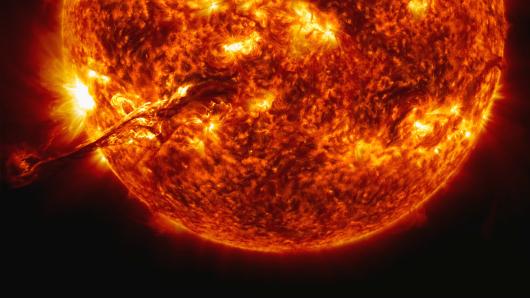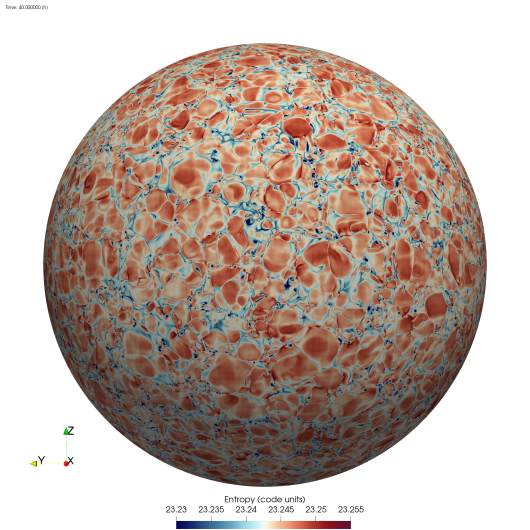The Sun holds great importance for life on Earth. Enhanced understanding of the Sun's atmosphere and space weather is crucial because solar conditions can impact human health, the performance of the technology we use on Earth, and even cause damage to critical infrastructures such as the electric grid.

Unlocking Solar Mysteries through HPC Simulations
The HPC project Solar Atmospheric Modeling utilises the applications Bifrost and Dispatch to simulate the Sun's atmosphere, specifically its outer layers, from which sunlight emanates.

These simulations are compared with observations from ground-based and space-based solar telescopes to gain deeper insights into the workings of the Sun and, by extension, other stars.
These applications are highly parallel, meaning they utilise numerous processor cores to perform calculations at a faster pace. On that national supercomputer, Betzy, Bifrost has been tested on more than 131,000 cores, and application developers are collaborating to adapt the code for GPUs. This adaptability makes the applications particularly suitable for testing on the new supercomputer, LUMI.
—In the long run, we hope the increased knowledge can provide a better understanding of solar storms and better forecasts of space weather. To achieve this, we must simulate much larger areas of the Sun than we have done so far, says Mats Carlson, Professor at Rosseland Centre for Solar Physics (RoCS), UiO. This requires even larger computing resources as well as the development of new algorithms and methods. We hope the new LUMI computer can help with this.
Rosseland Centre for Solar Physics (RoCS)
Rosseland Centre for Solar Physics aims to push the boundaries of solar physics by exploiting and extending the unique combination of cutting-edge expertise in observational data and numerical simulations. The centre is based at the Institute of Theoretical Astrophysics, University of Oslo.